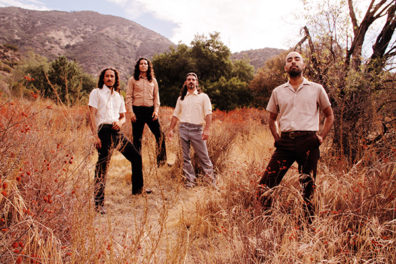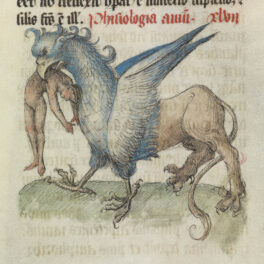
The Getty Center is home to the Museum’s holdings of drawings, manuscripts, paintings, photographs, and sculpture and decorative arts, from the Middle Ages to the early 1900s. Shown here: Gallery 102 in the East Pavilion
The Getty Center opened to the public on December 16, 1997. Here on The Iris, the Getty’s president and directors of our four programs reflect on our past 20 years and the Getty’s relationship with Los Angeles. Here the director of the Getty Foundation, which is dedicated to philanthropy that increases the understanding and preservation of the visual arts around the world, highlights three of the Foundation’s signature initiatives. —Ed.
When the Getty Center opened in 1997, it marked a watershed in the history of what was, and still is, a relatively young institution. A period of rapid growth in the collection and the anticipated increase in our exhibition, research, and educational programs made possible by J. Paul Getty’s extraordinary bequest clearly required much more space than the original museum in Malibu could provide. The five new pavilions in the Museum at the Getty Center—four devoted to the collection and the fifth to special exhibitions—presented a host of programmatic possibilities and marked the Museum’s coming of age as a fully public institution. The opening of the Getty Center also made it feasible to reconceive the Villa as a place dedicated to the study and display of Greek and Roman antiquities, with its own scholarly initiatives, conservation projects, and exhibitions.
In the twenty years leading up to 1997, the Getty Museum focused on two key activities: building the collection and defining the spaces and programs to be included in the new Museum in Brentwood. It became clear that the narrow scope of Mr. Getty’s personal collecting was too constraining for a museum of the Getty’s newfound ambition and broad educational mission. In 1983–84, three new departments were created: Illuminated Manuscripts, Drawings, and Photographs (the latter alone given a mandate to collect globally and up to the present day), and the purview of Decorative Arts was broadened to include sculpture. In addition, the temporal range of the collection was extended to the early 1900s, making possible a more rounded representation of European art from ancient Greece to the birth of modernism. With the opening of the Getty Center, the Museum’s dynamic program of displays, research, and public engagements has vastly expanded our impact on the cultural life of Los Angeles and, indeed, the world.
As we have settled into the Center over the past twenty years, continuing to build the collections has been our first priority. The Museum’s collection was never intended to be encyclopedic, but rather to represent the finest examples of works of European art within each of our seven collecting areas. Consequently, our approach is both to build on strength and also to look for opportunities to expand and diversify our holdings, with the goal of making the visitors’ experience as rewarding and exciting as possible. The following are a sampling of some major acquisitions made over the past twenty years—four of the many hundreds of artworks that have joined the collection in this time.
David Hockney’s Pearblossom Hwy., 11–18th April 1986, #2

Pearblossom Hwy., 11–18th April 1986, #2, 1986, David Hockney. Chromogenic print, 71 1/2 × 107 in., The J. Paul Getty Museum, 97.XM.39. © 1986 David Hockney
In our first year at the Getty Center, we acquired David Hockney’s monumental photocollage Pearblossom Hwy., arguably the most ambitious and resolved of the artist’s experimental photographs. The acquisition signaled that the photographs collection would henceforth embrace contemporary art. A few years later, in 2005, the Museum established the Photographs Council, a group of passionate collectors and patrons whose support has propelled the expansion of our holdings in late twentieth- and twenty-first-century photographs.
Pearblossom Hwy., representing a remote intersection northeast of Los Angeles, has attained iconic status both within Hockney’s oeuvre and our collection. As the artist himself has said, “the picture was not just about a crossroads, but about us driving around. The driver and the passage see the road in different ways. When you drive you read all the road signs, but when you’re the passenger, you don’t, you can decide to look where you want. And the picture dealt with that: on the right-hand side of the road it’s as if you’re the driver, reading traffic signs to tell you what to do and so on, and on the left-hand side it’s as if you’re a passenger going along the road more slowly, looking all around. So the picture is about driving without the car being in it.”
Paul Cézanne’s Young Woman at a Table

Young Italian Woman at a Table, about 1895–1900, Paul Cézanne. Oil on canvas, 36 1/4 × 28 15/16 in., The J. Paul Getty Museum, 99.PA.40. Digital image courtesy of the Getty’s Open Content Program
Cézanne is celebrated today as the most influential painter of the Postimpressionist generation, an artist who laid the foundations for Cubism, abstract art and modernism. His best-known and most-influential works date from the last decades of his life, when he was living and working in Provence in southern France, far from Paris, the center of the art world in the nineteenth century.
In Young Italian Woman Cézanne combined an objective recording of his visual experience with controlled, unified structure and monumentalizing grandeur. In 1999 the Museum seized the opportunity to acquire the picture, one of Cézanne’s greatest late figure paintings. The compelling physical presence of the unidentified model reveals the artist at his most enigmatic and poignant, conveying a sense of her withheld thoughts and emotions, and a mood of dejection or despondency. Indeed, her very pose, with her head held in her hand, recalls Renaissance images allegorizing melancholy.
Fran and Ray Stark Collection of Twentieth-Century Sculpture

Outdoor sculptures from the Stark collection are found throughout the Getty Center site and gardens. The stairs leading to the Museum Entrance Hall are home to L’ Air by Aristide Maillol. The J. Paul Getty Museum, Gift of Fran and Ray Stark, 2005.113.1
In 2005 the Museum received the gift of an impressive collection of twentieth-century sculptures assembled by film-producer Ray Stark and his wife Fran. The Stark collection comprises twenty-eight works by leading modern artists, including Alexander Calder, Alberto Giacometti, Barbara Hepworth, Ellsworth Kelly, Roy Lichtenstein, Aristide Maillol, Joan Miró, Henry Moore, and Isamu Noguchi.
The sculptures were strategically placed in the grounds surrounding Richard Meier’s architecture, both at the lower tram station and throughout the public spaces at the top of the hill. Joining Martin Puryear’s That Profile, commissioned by the Getty Trust in 1999, and Robert Irwin’s Central Garden, a key feature of the Getty Center since 1997, the Stark sculptures complement perfectly the strikingly modernist architecture of the Getty Center and environment.
Orazio Gentileschi’s Danaë and the Shower of Gold

Danaë and the Shower of Gold, 1621–23, Orazio Gentileschi. Oil on canvas, 63 9/16 × 89 7/16 in. The J. Paul Getty Museum, 2016.6. Digital image courtesy of the Getty’s Open Content Program
In 2016 the Museum had the chance to purchase one of the greatest Italian Baroque paintings still in private hands, Danaë and the Shower of Gold by the famed Italian artist Orazio Gentileschi. The painter depicts Cupid pulling back a dark-green curtain to reveal Danaë reclining on a red mattress covered with white and gold sheets. Jupiter appears as a cascade of gold coins and shavings.
Considered one of the artist’s supreme masterpieces, Danaë was painted for Giovan Antonio Sauli, a member of a Genoese delegation sent to Rome in 1621 to honor the newly elected pope, Gregory XV. Sauli invited Gentileschi to Genoa, asking him to paint “a penitent Magdalene, a Lot fleeing his burning city with his two daughters, and a Danaë with Jupiter appearing in a shower of gold, and other paintings of great exquisiteness.” In 1998 the Getty had acquired Gentileschi’s Lot and his Daughters, so the opportunity to reunite two of Sauli’s paintings was one we could not resist. The large scale of Gentileschi’s Danaë is now the central focus of the Museum’s gallery devoted to seventeenth-century Italian painting.
_______
Visit our online collection to browse thousands more works of art in the Getty Museum’s collection, including recent acquisitions, and to learn more about the six collecting areas represented at the Getty Center: drawings, manuscripts, paintings, photographs, and sculpture and decorative arts.




Comments on this post are now closed.